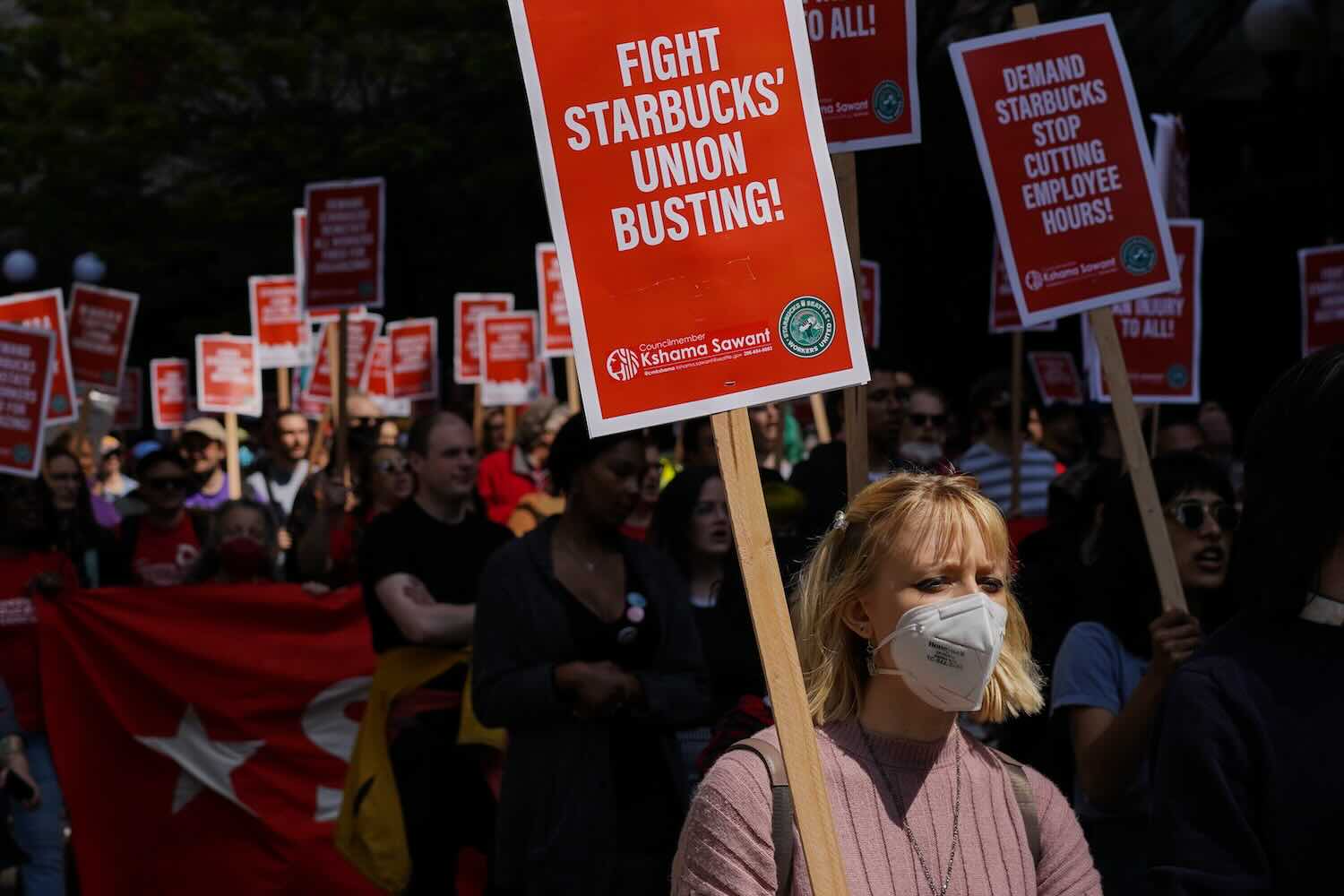(Editor’s note: This months’ examination of corporate earnings is the third in ImpactAlpha’s four-part series on the US economy. In his first Macro Impact columns, contributing editor Robert Brown addressed the US’s “first-time ever” monetary condition and the health of the US labor market as it translates to the broad economy. Coming soon: implications for impact investors. Drop us a line about what you’re seeing and what you need to know.)
ImpactAlpha, Feb. 15 – Recently, we’ve gotten a whole lot of mostly encouraging economic news. The stock market wobbled on this week’s report of an uptick in inflation, but Chairman Powell’s message remains fairly clear: rate cuts are likely not imminent, but we are done hiking rates, and will probably cut rates later this year.
Underpinning the policy pivot is an increasingly clear picture of economic growth in the United States which remains stable, even if it is moderating; with inflation rates that are clearly coming down, even as they remain elevated; and labor which is resilient, even as it becomes increasingly expensive.
Add to that backdrop signs of an improvement in broader financial conditions. Last week, the Fed produced the Senior Loan Officer’s Survey, which revealed that lending standards are becoming less tight.
It all seems fairly constructive for investors. The stock market seems to agree.
Not so fast.
Falling profits
Stable economic growth is an important backdrop for investment returns. Broad measures like GDP generally represent revenues. Underneath the top line are pesky issues like expenses – labor in particular – which lead to margins, which dictate the bottom line. This week is the perfect time to think about that analysis.
It’s February, and for stock investors, that means: year-end corporate earnings season.
By the time three-quarters of the S&P 500 had reported Monday, earnings for the total index had risen just 1% from the fourth quarter of 2022 to the fourth quarter of 2023, driven by outsized earnings growth in just two sectors – communications services (roughly 40%) and technology (nearly 13%). Earnings in the healthcare, financials and materials and energy sectors sunk by 20-30%.
Looking forward, the sell-side consensus projections for net income for the constituent companies for 2024 is a negative 2.3%. When we strip out the so-called “Magnificent 7” (Apple, Microsoft, Alphabet, Amazon, Nvidia, Meta and Tesla) the expected decline in net income for the coming year jumps to 6.5% (see “Rising risks as the S&P 500 is outsourced to the Magnificent Seven”).
The weakening trend in aggregate corporate profits would appear to be the forward-looking expectation on Wall Street, at least based on the analyst response to results this quarter.
Heading into this earnings season, the latest data we have on aggregate corporate profits, published by the BEA (Bureau of Economic Analysis), is detailed in the NIPA tables, or the National Income and Product Accounts – essentially the detailed balance sheet and income statement for the US economy.
As of the third quarter of 2023, US corporate profits were $2.7 trillion, which at the time appeared to be a robust acceleration, 3.7% higher than the June quarter. However; that quarter-to-quarter increase masked an important evolving trend.
Corporate profits in Q3 were 2.1% lower than the prior year, and that followed the second quarter which was 4.1% lower than the prior year.

That trend of declining aggregate profits may likely accelerate. First, the relationship between corporate profits and economic growth is, logically, fairly tight over the long run, as we see in the chart above. And GDP, while growing, is clearly slowing. Equally important, the correlation between GDP growth and profits growth is a statistically significant 0.45. So although aggregate GDP growth remains resilient, the exceptional growth which has propelled corporate profits since the fall of 2020 appears to be softening.
The charts below show that the relationship of corporate profits to the total economy also remains near historical all-time highs, but that too is decidedly trending lower. Since the Great Financial Crisis in 2008, the ratio of profits / GDP rose steadily from a long-run average of 6.4% to a peak of 10.9% in 2012, and was steadily falling until the Covid Recession, when it spiked again in 2020, reflecting an historical pattern of profit growth following recessions.

With a strictly domestic lens, we see a similar story: Corporate profits as a share of gross domestic income remain well above all time highs, and well out of range of “normal” for the last 90 years. As we see in the chart below, the ratio of corporate profits as a share of GDI has consistently held in a range between 4% and 7%, for an exceptionally long period.
In the context of corporate earnings, we could reasonably argue that the US economy, specifically, the business sector in the US economy is “over earning” capacity.

Gain-sharing
Add to this GDP story the impact that a resilient labor force is having on corporate profits. As we have written recently, labor is thriving in the United States, and with that strong demand for labor, workers have been able to demand higher wages. In many instances those higher wage costs have been passed on to the buyer, via higher prices for products and services.
The result is a very clear effect on corporate profit margins. As we see in the chart below, with thanks to my friend Jason Trennert at Strategas Research, the share of corporate GDP which is paid to labor has risen from a recent bottom of 55.8% in 2022 to 57.4%. Based on the strength and resiliency of labor, there’s good reason to believe this trend will continue.
The question is how far will labor’s share rise? And how deeply will corporate profit margins be affected?

As we continue to receive economic data which supports the soft-landing hypothesis, our intuition as investors is, naturally, to be pleased. Falling inflation, a strong labor market, and moderating growth rates are all seemingly constructive for a recovering economy.
Unfortunately, those dynamics would seem to be less supportive of profit margins, and for overall earnings growth. Companies producing high quality earnings growth is the place to generate positive returns as the domestic profit picture evolves over the next 12-24 months.
Impact investors, particularly those with early stage venture interests, would be wise to favor caution at the moment. Sentiment is strong in the public equity markets, and that sentiment is propelling stock prices.
But elevated stock price multiples in an environment where broad corporate profit growth is challenged would seem to be a potential false signal. Slowing top-line revenue in the context of weaker economic growth, combined with lower margins pressured by high input costs and rising wage pressures is a challenging dynamic for early stage companies.
_____________________________________________________________________________________
ImpactAlpha contributing editor Rob Brown was most recently co-founder and head of impact research for Atlas Impact Partners. Previously, he was head of research at JUST Capital and led research teams at AllianceBernstein and Nomura Securities International. Earlier, he was responsible for global macro research at Morgan Stanley.











